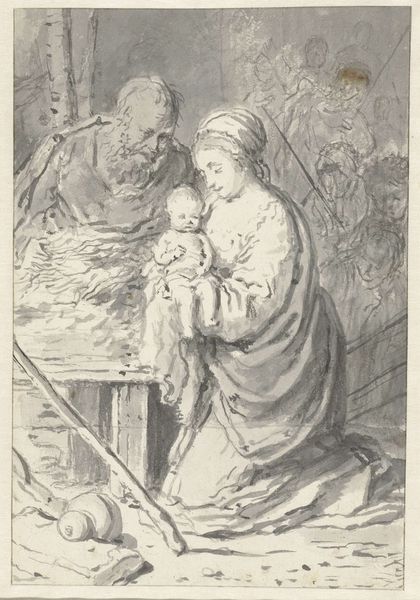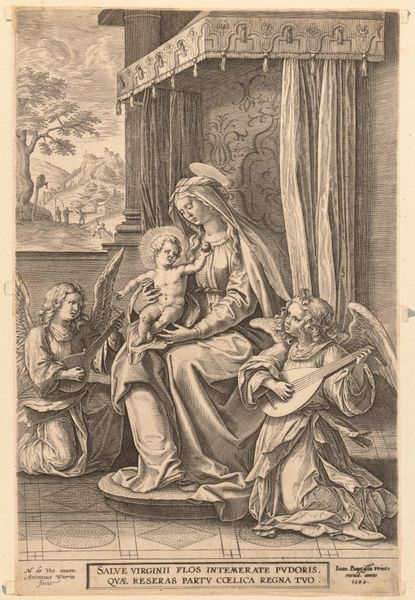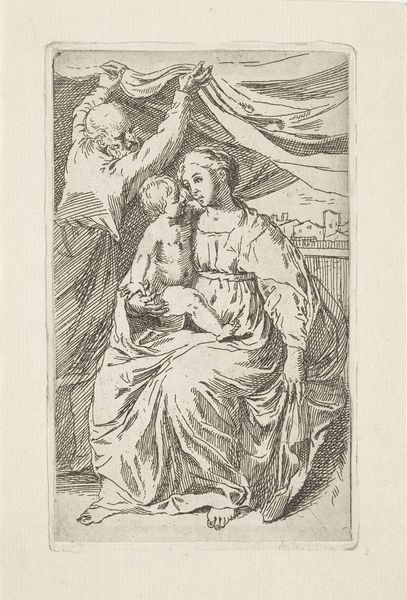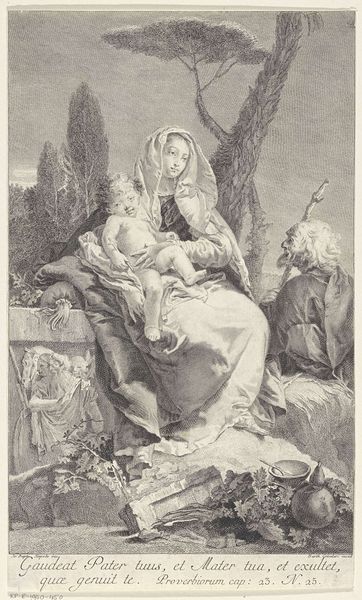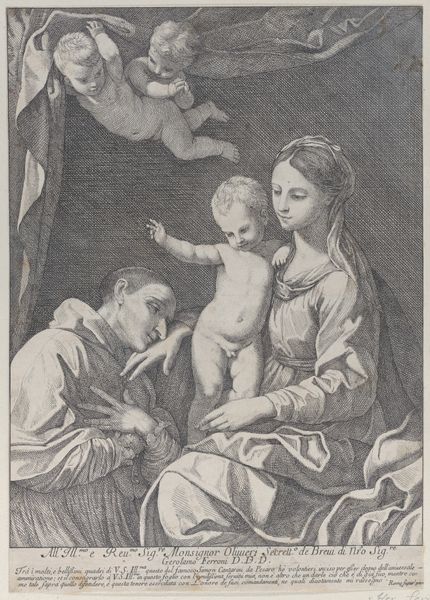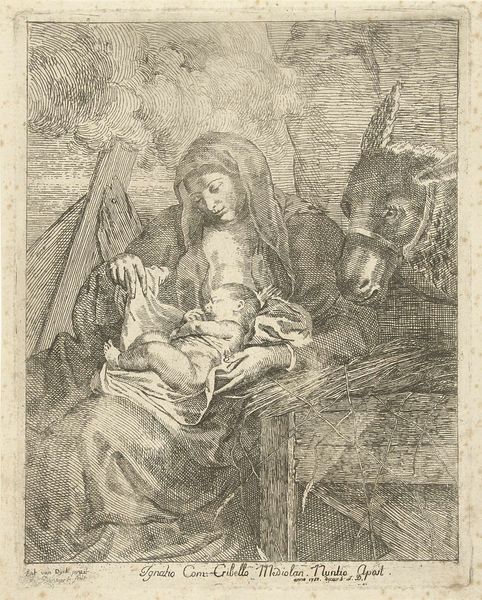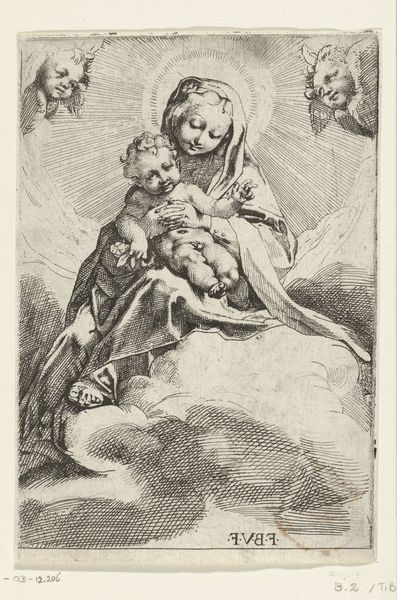
print, engraving
#
baroque
# print
#
old engraving style
#
landscape
#
figuration
#
history-painting
#
engraving
#
christ
Dimensions: height 310 mm, width 217 mm
Copyright: Rijks Museum: Open Domain
Pieter Fransz. de Grebber created this print, 'Christus en de Samaritaanse vrouw' in the 17th century using etching and engraving. These printmaking techniques, although quite different, both require painstaking labor to achieve such precision. Etching involves coating a metal plate with a waxy, acid-resistant layer, drawing the design, and then exposing the plate to acid which bites into the metal, creating the lines to hold ink. Engraving, on the other hand, uses a tool called a burin to directly cut lines into the metal. The textures, tones and contrasts we see are all down to the control of the hand and the manipulation of tools. Such prints played a crucial role in disseminating imagery and ideas widely during this era, and the skills were often passed down through workshops. By attending to the material process, we begin to see this artwork, not just as a depiction of a biblical scene, but as a product of skilled labor, social exchange, and the economics of artistic production.
Comments
No comments
Be the first to comment and join the conversation on the ultimate creative platform.
